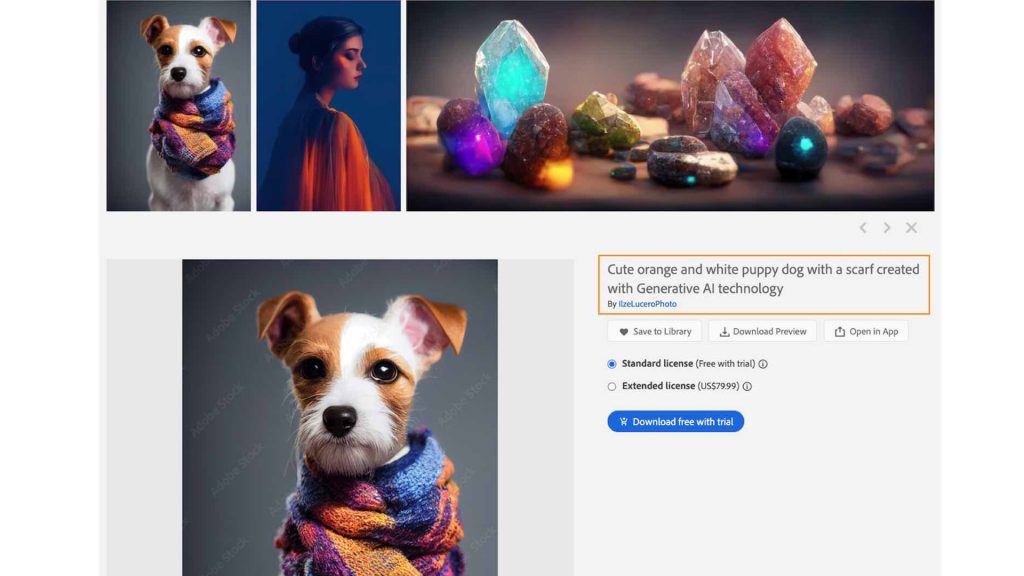AI-generated art is a controversial topic, to say the least, as some reject it while others embrace it. Adobe is now on the latter side as it will begin accepting “illustrations made using generative AI” on its Stock platform – with some stipulations.
Looking through the announcement, it appears Adobe sees this move as the best middle-ground approach. The company understands people have concerns over AI-generated art, but recognizes that technology is going to be used regardless of any ethical concerns. Adobe expects contributors to use AI as a way to “diversity their portfolios, expand their creativity, and increase their earning potential.” Accompanying the adoption, Adobe is updating its Stock contributor guidelines around the core belief of providing full transparency to future buyers of AI art.
Adobe’s new rules
First off, all generated AI content must be properly labeled as such and that includes images that look like photographs. Only pictures taken by a physical camera can be submitted to Adobe as actual photos. Contributors must tag their submissions as “Generative AI” as well as specify that it’s both “fictitious and generated.” Adobe doesn’t want users to tag submissions with “inaccurate descriptors”, like saying an image is a 3D render when it’s not, or claiming the people being depicted are real.
You also can’t submit anything showing real locations, “identifiable property [like a company logo], or notable people…” regardless if it’s photorealistic or a caricature. Content that is based on or depicts “an identifiable person requires a model release” meaning you will need permission and the rights to use someone’s likeness. Images must also be high-quality; nothing nightmarish.
When it comes to image rights, some platforms, like Getty Images, have banned AI illustrations over potential copyright problems. Adobe, on the other hand, is taking a crack at it. It appears users are being asked to familiarize themselves with an AI tool’s terms and conditions when it comes to licensing AI-generated content. If the tool’s developers don’t want people to license creations for commercial use, you can’t submit them. Royalties earned on generated AI images are the same as other Stock content, according to Adobe.
On the surface, it appears Adobe won’t be asking for proof of copyright. We asked Adobe if there’s going to be any moderation for licensing or if it’s all done on the honor system. We’ll update this story if Adobe responds.
The future of art?
Needless to say, a lot of artists across the internet have issues with technology like this. Many fear losing income as people flock to freely-available AI engines to generate art. It may have the unfortunate side effect of snuffing out that artistic spark in amateur artists. Adobe remains positive in its announcement by implying this is simply a new avenue.
This decision will certainly be an interesting experiment, especially when it comes to copyright. Getty Images may have banned AI images on its platform because of potential copyright problems, Shutterstock thought it would be best to team up with developers like DALL-E parent OpenAI.
It’s not just the art world seeing AIs getting better, as a new writing AI called ChatGPT has hit the streets. We tried out ChatGPT and the results are certainly interesting.

